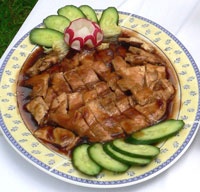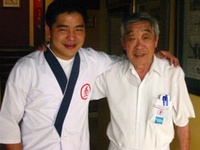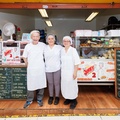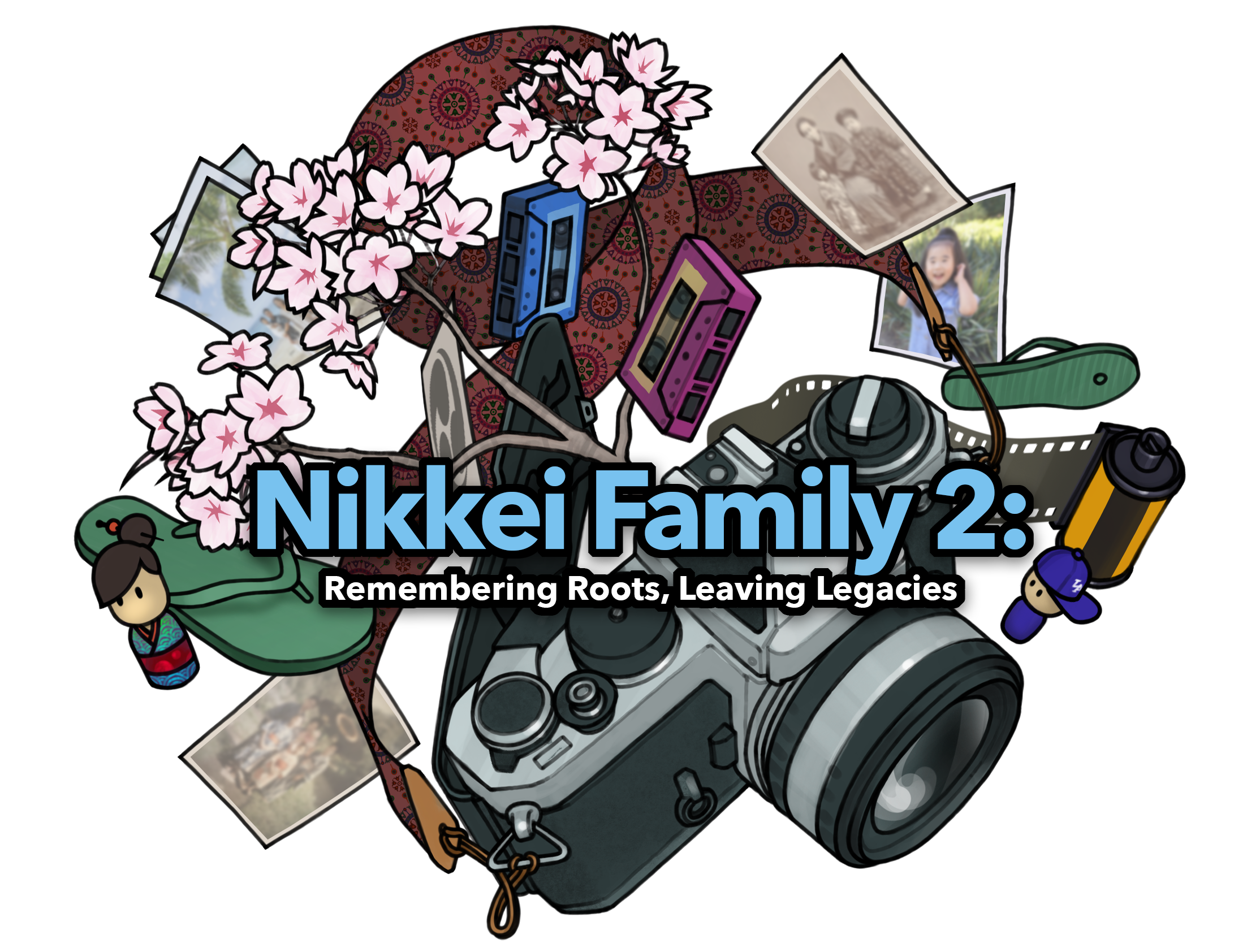Fusion cuisine? A mix of Peruvian and Japanese cuisine? What is Nikkei cuisine, really?
The table is ready. The ingredients are complete for one more task by Humberto Sato, one of the most recognized chefs of Nikkei cuisine in Peru. As soon as you hear his last name, you feel a special flavor of cooking. He prepares one of his typical dishes in front of the public: Chita al oil mushi.
The others watch as he picks up the cheetah ready to hand it the knife, he looks like a samurai. There are nine components that he has at his side and that are waiting for him to continue with one of the arts that he inherited from his family: cooking.
He cuts and cuts "for better cooking" while his son Yaquir, also a chef, is the other side of the coin. While the father is cheerful and humorous, he is more serious. He seems to analyze the situation as if asking for permission to smile. He only does it when he cooks, he says.
His father continues with the two-kilogram cheetah without scales. He says he can't drill her too much because she's "machita" and strong. The ladies laugh out loud at the teacher's joke. It's incredible, but the Peruvian sea cheetah recipe includes ingredients from classic vegetable oil to shooyu (Japanese chairu). Quite a fusion.
Beginnings of Nikkei cuisine
Fusion cuisine? A mix of Peruvian and Japanese cuisine? What is Nikkei cuisine, really? It is said that it began as a need for Japanese immigrants who came to Peru to feed themselves.
According to Sato, it started because they did not have the necessary ingredients to eat the foods they wanted and they merged the foods. He attributes the true authorship of Nikkei cuisine to his ancestors, because the new ones made the adaptation or fusion, and what they collect they perfect.
"Our parents adapted to the products of Peru because there were no imports for many years. They adapted to Nikkei food, which is a fusion. What we have collected from them, we modify it into something more to our palate."
The first to promote Nikkei food were Rosita Yimura, the creator of octopus with olive oil, daughter of Japanese immigrants who arrived in Peru in 1935, and Minoru Kunigami of the well-known kamaboko from the La Buena Muerte winery.
Angélica Sasaki, another renowned chef, who learned Japanese cuisine at home, is surprised by the "boom" that Nikkei food is now, but clarifies that "fusion food" is not just any mixture. "It appeared because our parents did not have the necessary ingredients to replace what they needed, but logically Nikkei food is not just any nonsense," he says.
For the renowned sociologist and author of various gastronomy books Mariela Balbi, Japanese immigrants benefited from China's progress in its vegetables. “The Japanese, as they progressed, founded Peruvian cuisine restaurants. To the carapulca, to the lomo saltado, they added a little kyon, Japanese sillau, miso, sugar. In the era of Japanese inns, Creole, Peruvian food, I don't know if for the upper classes but for ordinary people, was valued. Japanese cuisine was appreciated from the street in. But since the Japanese owners had Peruvian employees in their businesses, they ate with them, and thus they knew a little about the Japanese product," Balbi declares.
Meanwhile, for the poet and author of the concept of "Nikkei cuisine" in an article published in the newspaper La República in 1983, Rodolfo Hinostroza, it has been since the 80s when restaurants with Nisei chefs "multiplied" and production the Nikkei phenomenon as a motive to join the Peruvian nationality.
He maintains that Peruvian ceviche is sashimi residue with a little lemon. Perhaps no one expected that Peru's flagship dish would be born from a result of Japanese food, he believes.
But when we talk about Nikkei cuisine, it is not only about talking about its variety and mixture, because for the renowned chef Gastón Acurio, one of the main promoters of Nikkei food, it is not only liked by Peruvian palates but, thanks to The variety of foods we have in Lima has also become an export product.
What is undoubtedly use ingredients such as miso or Japanese sillau, getting closer to the characteristic flavor of this food.
* This article was originally published on the website of Asociación Peruano Japonesa , Affiliate Discover Nikkei, on January 27, 2007.
© 2007 Asociación Peruano Japonesa and Roger Gonzales














